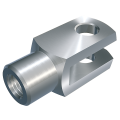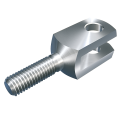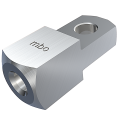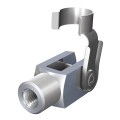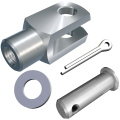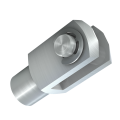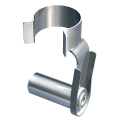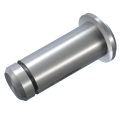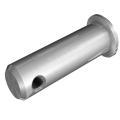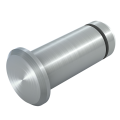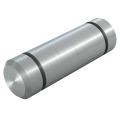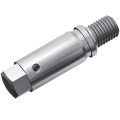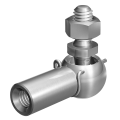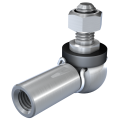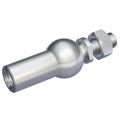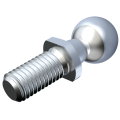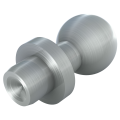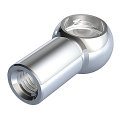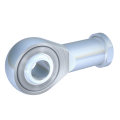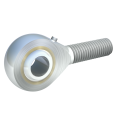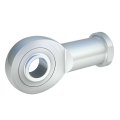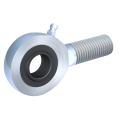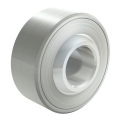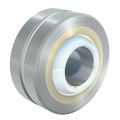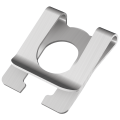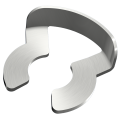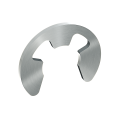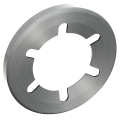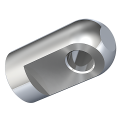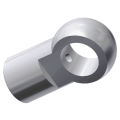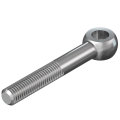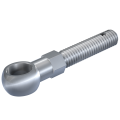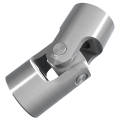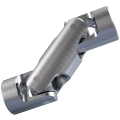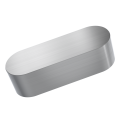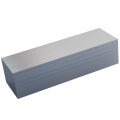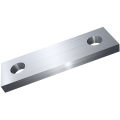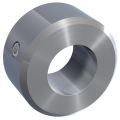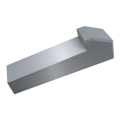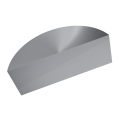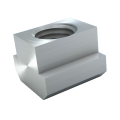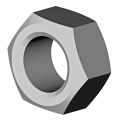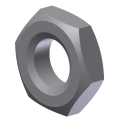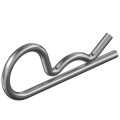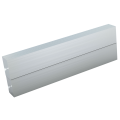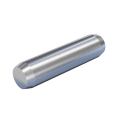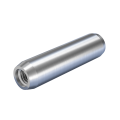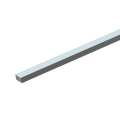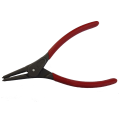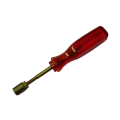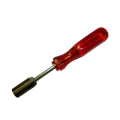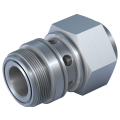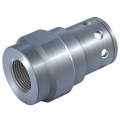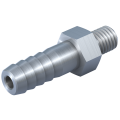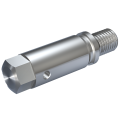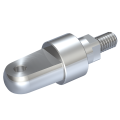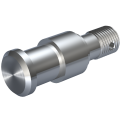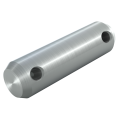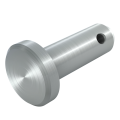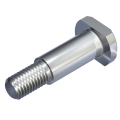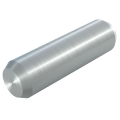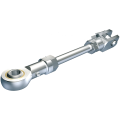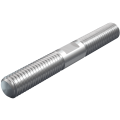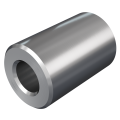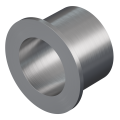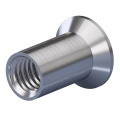Additional product information
6 mbo 54 M6 Außengewinde verzinkt weiß
For products containing steel, U.S. import regulations require the specification of the Country of Melt and Pour. This information ensures correct customs classification when exporting to the United States.
What does “OTH” mean?
OTH (Other) is used when the steel material originates from multiple countries, for example, in assemblies or non-batch-specific manufacturing, or when the exact country of origin cannot be clearly determined. This designation is explicitly permitted by U.S. Customs authorities.
Weight: What is relevant?
- For tariff heading 73 (e.g., screws, bolts), the total product weight is always relevant for customs purposes.
- For other affected headings listed in Annex I, only the input weight of the steel material is used as the basis for customs duties.
Mill Test Certificates
Mill Test Certificates are not currently required by U.S. Customs authorities. For this reason, we do not provide them as a standard document at this time.
Sources
Sustainability
PCF (Product Carbon Footprint) | CBAM
The Product Carbon Footprint (PCF) is a central tool for assessing the environmental impact of a product. It considers the entire lifecycle of a product - from raw material extraction through production and use to recycling or disposal. Emissions occur at each stage that affect the greenhouse effect and burden the climate.
System boundaries:
Cradle-to-Cradle: This approach aims to develop products that can be fully returned to new product cycles or natural loops at the end of their lifecycle, aiming for a closed loop without waste. The steels and plastics used can be recycled without loss and used for new products.
Cradle-to-Gate: This method assesses a product's environmental impacts from raw material extraction to the point where it leaves the factory. It accounts for direct emissions and energy consumption until it exits our facilities, excluding the usage and end-of-life phases. This reflects the environmental impacts for which mbo Osswald, as the manufacturer, is directly responsible.
Cradle-to-Grave: Due to the full recyclability of the materials used, this approach is not applied, favoring the Cradle-to-Cradle concept. At the end of their use, products do not become waste but valuable resources for new products, contributing to resource conservation.
Scopes:
Scope 1: Includes direct emissions from sources controlled or owned by mbo Osswald, such as the combustion of fossil fuels in boilers or vehicles, as well as process emissions and fugitive emissions like refrigerant leaks.
Scope 2: Covers indirect emissions from the consumption of purchased energy like electricity, heat, or steam.
Scope 3: Includes all other indirect emissions along the value chain, such as business travel, supply chains, or the use and disposal of sold products.
CBAM (Carbon Border Adjustment Mechanism):
Please note that this information is provided without legal guarantee of completeness, timeliness, and correctness.
A good source for practical questions is the EU Commission's FAQs on CBAM.
Under CBAM, emissions from Scope 1 are considered direct emissions and those from Scope 2 as indirect emissions; Scope 3 is not considered.
For our products whose country of origin is outside the EU and are affected by CBAM, we or our upstream suppliers have reported the emissions in accordance with CBAM guidelines and settled the required CO2 certificates. Upon re-importation into the EU, these products – if unchanged – are regarded as returned goods that were previously released for free circulation. Therefore, CBAM is not applicable for these upon re-importation into the EU. For goods non-preferential originating in the EU that are re-imported, CBAM also does not apply in general. Further information can be found in the section „10. Does the CBAM apply to ‘returned goods’?“.
Direct emissions
7,541 g CO2e / piece
Indirect energy emissions
0,012 kg CO2e / piece
Other indirect emissions
0,114 kg CO2e / piece
Cradle-to-Cradle
0,134 kg CO2e / piece
Cradle-to-Gate
0,106 kg CO2e / piece
SVHC (Substance of Very High Concern)
The following list contains SVHCs from the candidate list in its current version present in the specified product in concentrations above 0.1% according to Article 33 of the REACH regulation (Regulation (EC) No. 1907/2006). If the 'Phased out as of' date is set, this SVHC is no longer contained in deliveries after this date.
PFAS (Per- and Polyfluoroalkyl Substances)
California Proposition 65
The California Safe Drinking Water and Toxic Enforcement Act of 1986 – commonly known as Proposition 65 – obliges any company whose products are placed on the market in the State of California to provide a clear warning if those products contain substances that California has classified as carcinogenic or hazardous to reproduction.
Since the updated regulations took effect on 31 August 2018, such warnings must be “clear and reasonable.” The definitive reference is the chemical list maintained by the Office of Environmental Health Hazard Assessment (OEHHA).
A warning is required whenever the foreseeable and intended use of a product exposes consumers to a listed substance above the thresholds that OEHHA defines as a significant cancer risk or an observable reproductive effect. Whether these thresholds are exceeded can be assessed only with detailed knowledge of the product’s final application and operating environment.

This product can potentially expose you to chemicals including Lead and Lead Compounds, that is known to the State of California to cause cancer (and birth defects or other reproductive harm). For more information, visit www.P65Warnings.ca.gov
RoHs (Restriction of Hazardous Substances)
The product does not contain - with the exception of lead, if listed above as SVHC - any substances listed in Annex II of Directive 2015/863/EU in its current version above the established maximum concentrations in homogeneous material.
Directive 2011/65/EU (RoHS) and its amending directives 2018/736 to 2018/742 allow the use of "lead as an alloying element in steel for machining purposes and in galvanized steel containing up to 0.35% by weight" as an exemption 6a in Annex III. This exemption expires for certain categories of equipment from 21.07.2021. The review regarding the usability in the lead-containing products listed below in this context is your responsibility. A further extension of this exemption is currently under review by the EU.
CMRT (Conflict Minerals) | EMRT (Extended Minerals)
The company-level filled out Reporting Template can be downloaded here for the CMRT and here for the EMRT
POP (Persistent Organic Pollutants)
None of the substances listed in Annex I and II of EU POP Regulation 850/2004/EC are manufactured or used for the product.
TSCA (Toxic Substances Control Act)
None of the substances listed in the Frank R. Lautenberg Chemical Safety for the 21st Century Act are manufactured or used for the product.
Warnings
Domestic use: The product is primarily intended for industrial use. When used in private areas, special care and specialist knowledge are required. In particular, the product must always be kept out of the reach of children. The product is not to be used as a toy. It can be swallowed and pose a risk of suffocation. In addition, it may contain lead due to the raw material used, see "Critical substances".
Contact allergies: The product may trigger allergic reactions to oil, grease, zinc or nickel due to the raw material used, the manufacturing process and the surface. Please pay attention to this and take appropriate protection.
Risk of injury: There may be a risk of injury from sharp edges, metal chips, protruding metal spikes or, in the case of larger dimensions, the weight of the product itself. Particular caution is required when assembling and disassembling the product. Use suitable protective equipment.
Critical substances: The product may contain substances of very high concern (SVHCs) or other substances classified as critical by the EU. The substances contained in the product according to the valid ECHA candidate list can always be found on the specific product page of our website.

